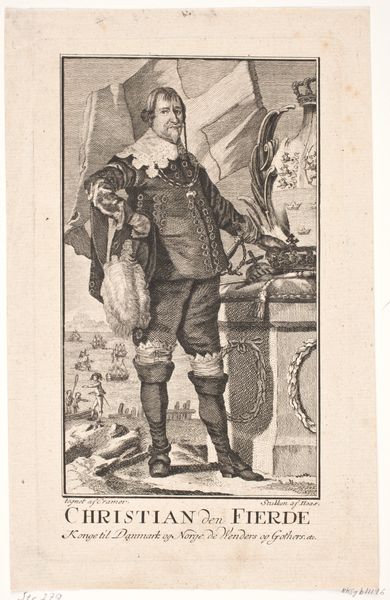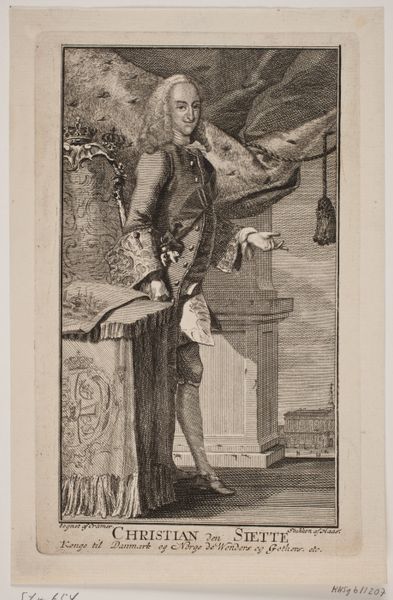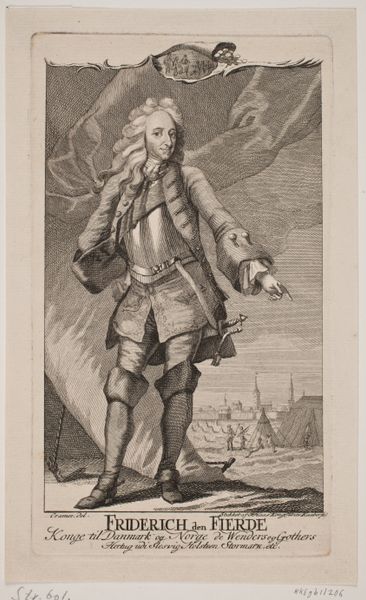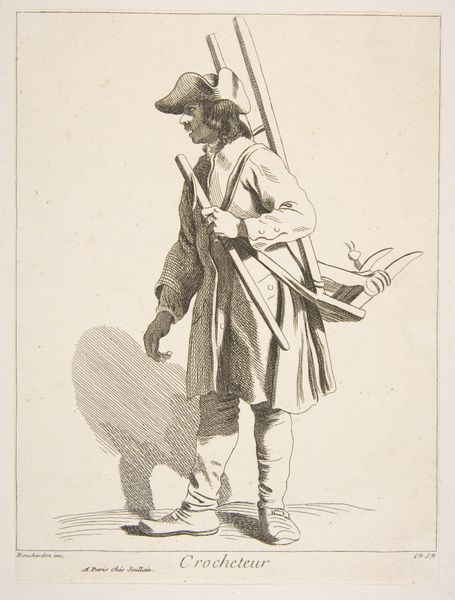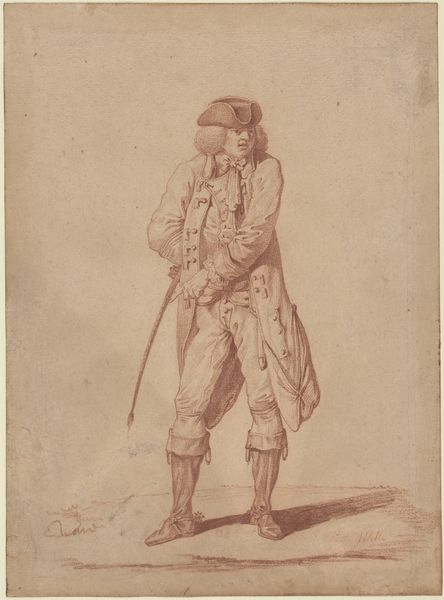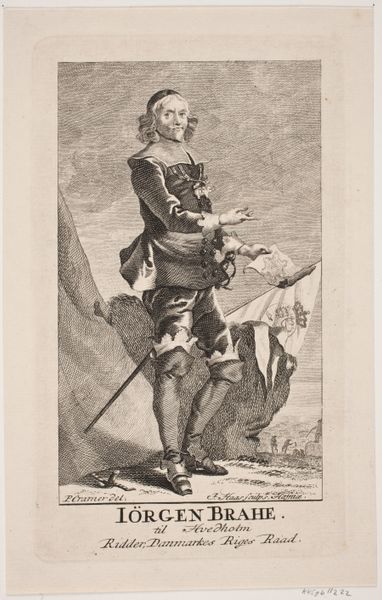
print, engraving
#
portrait
#
baroque
# print
#
history-painting
#
engraving
Dimensions: 178 mm (height) x 112 mm (width) (plademaal)
Curator: Immediately striking, isn’t it? The print, made sometime between 1720 and 1775 by Jonas Haas, depicts Michael Christian Ludvig Ferdinand Tønder. There’s a kind of blustery confidence in his pose, even if it is captured with rather spare lines. Editor: Spare, yes, but look at the precision of the engraving. The very visible tool marks speak to the engraver's skill. How was this portrait actually used, I wonder? And where? The printed image feels almost utilitarian despite the grandeur of the man. Curator: Right, the materials matter. We’re dealing with a printed image, accessible, not an oil painting commissioned for a specific, private space. This implies a desire for broader visibility, a strategic dissemination of Tønder's image connected to a project of asserting power and projecting authority. Editor: Projecting authority absolutely resonates. Consider the backdrop—a ship at sea, suggesting command over the maritime realm. His slightly raised hand is commanding. The engraving makes even cloud appear as meticulously constructed artifacts. Curator: Exactly, it’s staging and symbolism deeply entrenched in the aesthetics of power during this historical moment. Let's not overlook the complexities of naval power in the context of 18th-century politics. Maritime dominance enabled trade, colonization, and global dominance, reflecting intricate global hierarchies. Editor: Absolutely. The context reminds me, this print serves to monumentalize a man complicit with the exploitation inherent in naval activity during that time. This material iteration is an echo of violent, extractive economies. Curator: True. And even the detail of the navigational tools at the bottom underscore the technical and economic networks that supported figures like Tønder. Analyzing these seemingly minor details reveals complex systems of labour and exchange. Editor: So even this print’s seemingly simple form speaks volumes about how power functions both visibly and through complex infrastructures of making. Curator: Precisely, the print serves not just as a likeness but as a node in larger political and economic networks. Considering that enriches our understanding of not just the "what" but the "how" and the "why" of its existence. Editor: It certainly reframes how we see seemingly straightforward images! Thank you.
Comments
No comments
Be the first to comment and join the conversation on the ultimate creative platform.
